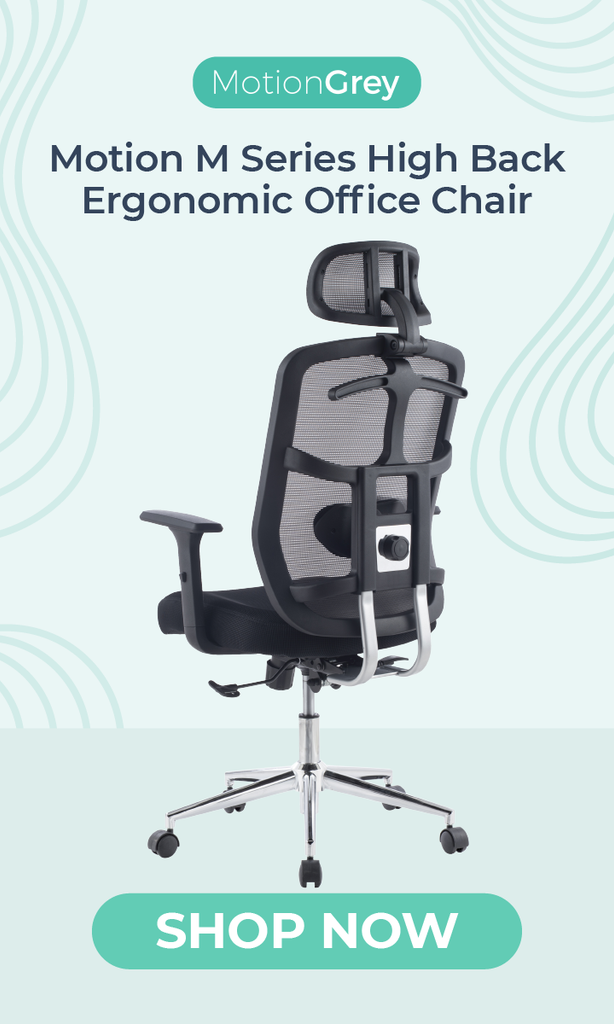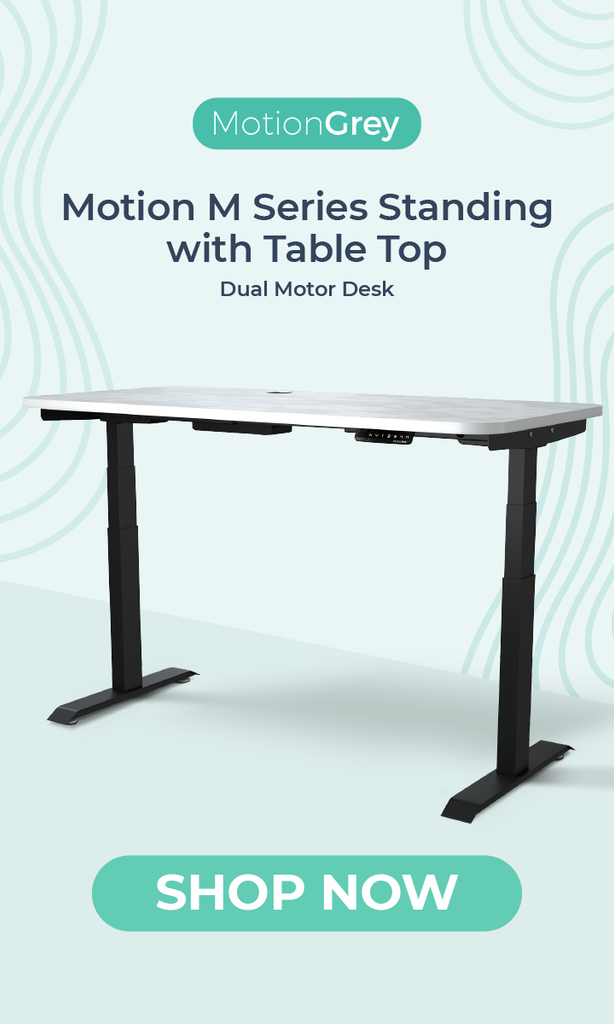The Problem With Sitting: Experts Share Their Views
From health maladies to psychological hazards to early death… The list goes on when it comes to issues associated with what is supposed to be a very basic action: sitting. When a health expert says “sitting is the new smoking”, clearly we have a problem. Heck, that is why we even have standing desks!

What exactly do the experts say on the problem with sitting?
We gathered some of the most informative answers from various experts on the issue. Below we discuss a number of risks associated with sitting that directly impact the body, mind, and even the way we handle relationships. Solutions are also presented such as how to improve posture, using ergonomic tools like a standing desk, and a variety of health tips.
If you have a problem with sitting, keep reading because we might just solve it for you. And if you don’t, then we would love to have you comment below and share your tips on how you manage to stay problem-free with your sitting habits.

Too Much Sitting Leads to Early Death, No Matter How Much You Exercise
A study conducted by the American Cancer Society enumerated 14 ways through which prolonged sitting can kill a person: (1) Cancer; (2) Heart Disease; (3) Stroke; (4) Diabetes; (5) Kidney Disease; (6) Suicide; (7) Chronic Obstructive Pulmonary Disease (COPD); (8) Lung Disease; (9) Liver Disease; (10) Peptic Ulcer and Other Digestive Disease; (11) Parkinson's Disease; (12) Alzheimer's Disease; (13) Nervous Disorders; and (14) Musculoskeletal Disorders.
Those were the findings after gathering data from nearly 128,000 men and women, all of whom were free of major chronic illnesses when the study started. But when a follow up was made after 21 years, almost 49,000 of the participants had already died. “The increased mortality risk differed by disease, ranging from 10 percent for cancer to 60 percent for musculoskeletal disease,” says the study's lead researcher Alpa Patel.
A separate Australian study also found that people who spent an average of 6 hours a day sitting and watching TV lived 4.8 years shorter than those who didn't. It further revealed that once you get past 25 years old, every hour of sitting and watching TV equates to a reduction of 22 minutes in your life expectancy. This is supported by Canadian standing desk experts who shared that a person should observe a sit-stand ratio of 1:1 to 1:3 in order to live healthy and to live long.

And if you think hitting the gym at the end of the day can counter these risks, then you are wrong according to Dr. JoAnn Manson, chief of preventive medicine at Harvard-affiliated Brigham and Women’s Hospital. “Even if you are doing the recommended amount of moderate to vigorous exercise, you will still have a higher risk of mortality if you’re spending too many hours sitting,” she says.
Solution: Move!
According to Harvard Medical School professor Dr. I-Min Lee, “Any activity is good. Some is better than none, and more is better than less.” Therefore, the first step is to have any form of activity that will stop you from sitting too much. And one that is as basic as sitting: standing.

The ideal sit-stand ratio that is being promoted by Canadian standing desk experts actually came from Jack Callaghan, a professor in Waterloo’s Department of Kinesiology. The ratio of 1:1 to 1:3 means that a person should spend 30 minutes of standing for every 30 minutes of sitting, or as much as 45 minutes of standing for every 15 minutes of sitting.
“Standing for six hours a day instead of sitting can help you burn an extra 54 calories during those six hours,” says Mayo Clinic’s Dr. Francisco Lopez-Jimenez. “That sounds [like] a little, but when we add those calories day after day, week after week, we can actually estimate that a person can lose about 5.5 pounds in a year. And that translates into 22 pounds in four years.”
Granted, standing alone does not produce colossal benefits; rather the activities that standing prompts you to do that are the real game-changers. So stand – and move! Use a standing desk as a healthy encouragement. You can even pair this with ergonomic mats to level up the experience. Stretch every now and then and limit those muscles from inactivity.
Sitting Posture: “Your Task is to Sit Up Straight, Not to Be Held Straight”

Another problem with prolonged sitting is the effect it has on the spine. SpineUniverse warns that the seated position “results in tightness of your hip flexors such as the iliopsoas muscle[,] and pressure and some ischemia (restricted blood flow) of your buttock muscles—the gluteus maximus. This muscle is an important supporter of the spine.”
It further adds that the “longer you stay seated, the more likely you are to let your posture slide… Regular, long bouts of sitting will speed up the wear and tear on your spinal discs, and neck and back pain can become a daily occurrence as opposed to an occasional problem.”
Solution: Observe correct posture when sitting. And move often!
Harvard Medical School says that a hunched-over position is not healthy as it reverses the natural curves of the spine. Therefore, when sitting, the correct posture necessitates that one sits upright and as far back in the chair as possible.
It adds that you must keep your feet flat on the floor, chin parallel to the floor, shoulders relaxed, and to be mindful of the curve in your lower back. A trick, it shares, is to use a rolled towel to guard the normal lumbar curve.
However, SpineUniverse cautions that even if you observe a perfect sitting posture, holding that same position for extended periods will still be hazardous to the spine. “Varying your postures by occasionally standing and moving around for at least a few minutes each half hour will help keep your spinal joints, muscles, tendons, and ligaments loose and pain free.”
Hence to move often is still the gold standard; but that whenever you sit – which is inevitable – then correct sitting posture is essential. Use ergonomic chairs to aid you with maintaining proper posture. But remember that your task is to sit up straight and not to be held straight.
Prolonged Sitting Sabotages Your Mental Health, Relationships
Of all the problems associated with too much sitting, perhaps the most alarming is its impact to mental health. According to a UCLA study, too much sitting results in the thinning of brain regions associated with memory, which leads to cognitive decline and dementia among middle age and older adults. It adds that no amount of physical activity could offset this effect on the brain unless you avoid prolonged sitting.
In the workplace, too much sitting also leads to psychological distress and depression. An Australian study of more than 3,300 government workers showed that sitting for more than 6 hours a day led to a moderate to high level of anxiety. A similar study involving 9,000 women in their fifties also found that sitting seven hours daily (along with physical inactivity) triples the likelihood of succumbing to depression, compared to sitting fewer than four hours with physical activity.

From here the ramifications seem endless. When blood flow to the brain is reduced due to prolonged sitting, the ability to think is hampered and that would impact your career, academic performance, or even your simple day-to-day decision making processes. Once depression hits, self-esteem suffers and that extends to many aspects of your life too, especially to how you conduct relationships with other people.
Even your sex drive plummets when you sit too much – which could be a relationship killer. For men specifically, prolonged sitting increases the likelihood of erectile dysfunction due to the restricted blood flow in the pelvis area.
Solution: Make movement a habit. Move, move, and move again.
“The truth is, you don’t break a bad habit; you replace it with a good one.”
The trick with habits (especially when we’re talking about the mental hazards of prolonged sitting) is that you must not rely on your willpower alone. Studies show that people who think they have the strongest willpower are actually the ones most likely to give in to temptation; and this is because they “fail to predict when, where and why they will give in,” explains psychologist Kelly McGonial.
Therefore in order to make movement a habit (and, in effect, to counter prolonged sitting as a bad habit), one has to have foresight and create measures that will discourage sitting while simultaneously encouraging movement. The focus tends to be not on willing yourself to stop sitting too much, but to instead move a lot – thereby replacing the bad habit with a good one.

In the workplace, this can be achieved by using tools like standing desks – to turn standing into a habit, and then prompt further movements which then turn into further habits. You can even use an electric standing desk and adjust it to different heights so you can engage in a variety of movements.
Other tricks include positioning the telephone in an area without a chair; parking further from entrances; doing standing or walking meetings; avoiding moving walkways, escalators, and elevators; and more. The key is to foresee your own upcoming activities and manipulate your environment to make movement easy and prolonged sitting hard.

Sitting in itself is obviously not the problem, but rather prolonged sitting. Done properly, sitting will allow us to heal, concentrate, find comfort, and perform certain functions with greater efficiency. Too much and it could wreak havoc on the physical and mental health. As the wellness adage states: “Moderation is the mother of good health.”
About Us
MotionGrey is a Canadian standing desk company that specializes in ergonomic furniture. We supply and install only the best quality standing desks and ergonomic chairs in the country.
Our products are designed with wellness as the focal point. From our electric standing desks to our office and gaming chairs, we deliver best value by putting your health, safety, and comfort as top priority. Boost your creativity and level up work performance. We want you to create great outcomes so we’re providing you only the best tools to make them possible.
Click here to view our selection of products. Got questions?





